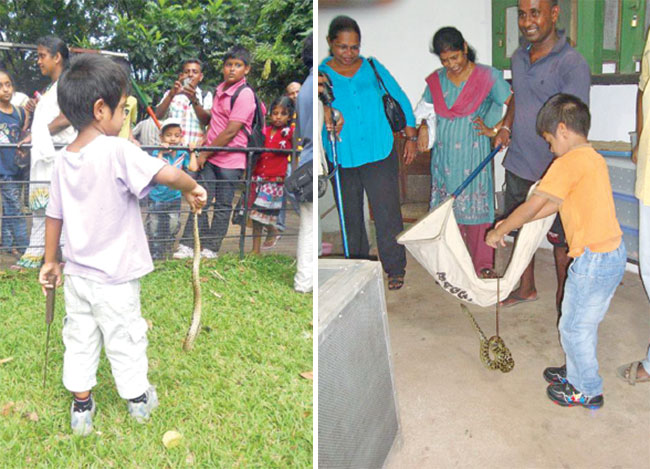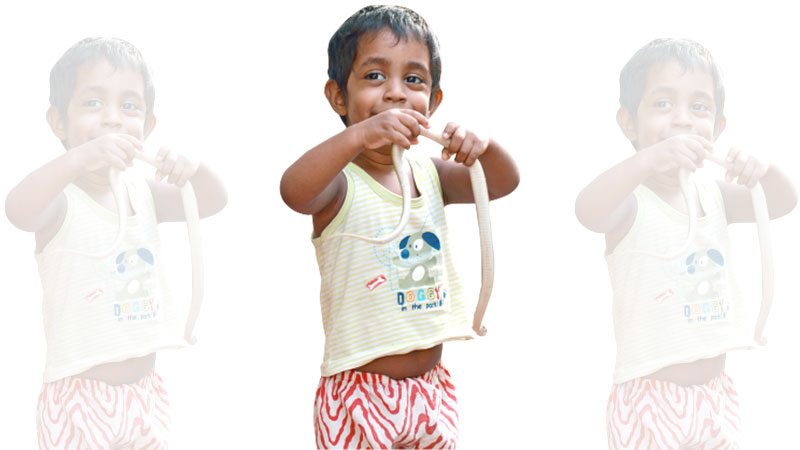Do you love snakes? Or does the thought of them terrify you? Well in this week’s Amazing kids we meet three special children, sixteen-year-old Amatha Mendis Wickramasinghe, fifteen-year-old Gagana Mendis Wickramasinghe and seven-year -old Aranga Mendis Wickramasinghe who happen to love snakes and amphibians that means creatures like toads, salamanders and frogs. These children with the help of their parents rescue wild snakes and amphibians and look after them before releasing them to the wild. This is indeed a very special family, uncle and aunty Mendis who are herpetologists (someone who studies reptiles and amphibians) along with their three children do lots of wonderful things to help protect snakes and wildlife.
Q: How did you all first get interested in snakes, reptiles and amphibians?
Amatha – From the day we were born, we were working with reptiles.
Gagana – We got interested in snakes and reptiles as we grew up. We saw our parents working with reptiles so we also learned about reptiles from our parents.
Aranga- I like the pattern of reptiles.
Q: What’s your favourite reptile, and why do you like them?
Amatha- Reptiles are so unique for me and my favourite reptiles are snakes and out of all them my favourite is the Sri Lankan green pit viper.
Gagana – I don’t have a favourite snake because all are beautiful to me.
Aranga – All are the same for me. I like everyone.
Q: What’s something you have learned about reptiles that has surprised you?
Amatha – Every day I work with reptiles so I learn something new. For example a group of scientists had recently discovered that certain amphibians now feed milk to their babies. A paper that was recently published suggested that they don’t feed milk like mammals do but instead they secrete a slimy substance on the skin which the babies peel off and eat. The mom will die if the babies didn’t eat the slimy substance and the babies too will die if they don’t feed on it due to lack of proper nutrition.
Gagana – What surprises me most are the colours of reptiles, they can be so colourful, they also use different variations of colours depending on their habitats and as camouflage. For example, a tree snake could blend so beautifully to its environment that I would not be able to tell it apart from a tree.
Amatha – Also snakes are so adaptable to their environment. You can literally find snakes in many environments, like high up in a canopy, underground or even in the deep sea. For example, sea snakes have a flat tail allowing them to swim faster and catch their prey, while tree snakes are very good at climbing. There are also a species of snakes that can glide from tree to tree.

Q: Do you have or would you like to have a pet snake one day?
Amatha – We haven’t had pet snakes but we have cared for rescue snakes for three or four months before releasing them back to the wild.
Gagana – We would really like to have a pet of our own but the rules in Sri Lanka are pretty strict regarding keeping snakes so we have to follow the rules.
Aranga – It’s illegal to keep wild snakes in Sri Lanka so we can’t keep snakes as pets.
Q: As children what’s it like to observe reptiles in the wild, because it is not something all children get to do. So can you tell us what the experience is like for you?
Amatha – It’s fun; the coolest thing about working with reptiles and amphibians in the wild is that you have to work at nighttime because that’s when reptiles and amphibians are mostly active. So, when we go to the field it’s mostly at night. We are also like reptiles who work during the night and then sleep during the daytime. But reptiles are also active during the daytime as well, so sometimes we get to see the best of both worlds, so it’s 24 hours of work, but very exciting and I love it.
Gagana – They are fun to observe, but we must keep a keen lookout for them to actually find them. Seeing snakes in the wild can be tricky. You won’t get to see them if you keep looking for them, but if you don’t look to find them; they sometimes appear straight at our feet.
Aranga- Snakes are pretty! And it’s so much fun for me. I don’t know if it’s fun for other people!
Q: How can children help to protect endangered reptiles and other animals?
Amatha – Don’t use many plastic bags try to reduce them or reuse them, by doing that you will be able to save the lives of big and small animals. The next time you see a snake, do not kill them. They are like moving medicine! If we find some kind of a medicinal plant in our house, we wouldn’t want to destroy it. So it’s the same with snakes. Their venom is so powerful that loads and loads of medicine can be made from it.
Gagana – The venom of the saw-scaled viper can help prevent blood clots and is also beneficial for people with diabetes. So, we must protect them, not just snakes and amphibians but all animals.
Aranga – Don’t throw stuff at the snakes, like rocks and stuff. If you do it they will become feisty and attack you. If you don’t do it they won’t be feisty and will leave you alone.




